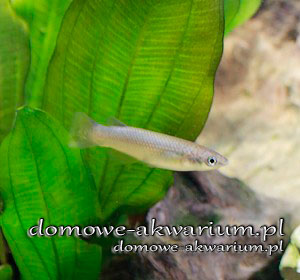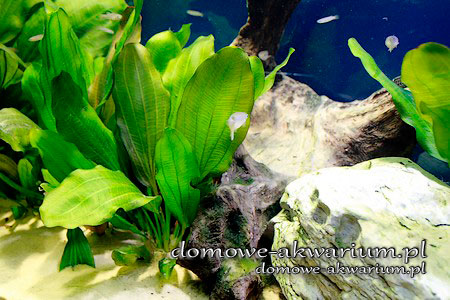
| Gatunek | Sakaramy Killifish |
|---|---|
| Nazywany też | Sakaramy's Pachypanchax |
| Nazwa łacińska | Pachypanchax Sakaramyi |
| Rodzina | gudgeons |
| Występowanie | Afryka |
| Długość | 8 - 9 cm |
| Temperatura | 20 - 24°C |
| Twardość wody | soft - medium hard |
| pH | 6.5 - 7.5 |
| Zbiornik | 80 L |
| Pokarm | live, frozen, dry |
Sakaramy Killifish, Sakaramy's Pachypanchax, Sakaramy Rivulus
This is a freshwater species, endemic to the Sakaramy River and Antongombato in the northern part of Madagascar. These are sections with a swift stream of water that form both deeper and more peaceful backwaters, with a rocky and rocky substrate, aquatic plants typical for Madagascar. The species is endangered.
Pachypanchax sakaramyi is characterized by its elongated, torpedo-shaped body. The color of the male and female fish significantly varies after they reach sexual maturity. The female is of a pale color - bluish olive, with yellow-transparent fins. The male, on the other hand, is characterized by blue coloration in the front part of the body and orange-red in the rear, with a golden sheen and blue-red fins. Additionally, the male is larger than the female, and his fins seem to be slightly longer.

This is a peaceful and friendly fish, but we should not keep it with smaller species. By nature, Pachypanchax sakaramyi is a predator, hunting insects or invertebrates, including shrimp. Males tend to compete for females and dominate in the herd. Therefore, we should keep a group of these fish in a suitably large aquarium, with a sufficient number of hiding places for weaker individuals.
The species prefers spacious, well-lit aquariums equipped with decorative elements in the form of roots, rocks or stones. The substrate should be fine and soft - preferably sandy. Plants will be a nice addition, e.g., Madagascar laceleaf or water hyacinth Eichornia crassipes. The fish also require an open space for free swimming.

This is an oviparous species, which breeds most easily in a group (with a predominance of females), among plants with small and delicate leaves. The female lays eggs in the open water column, and the eggs fall to the bottom or stick to plants. Parents do not take care of offspring and can eat eggs or young fish. The fry hatches after 3-4 days, depending on the water temperature and begin to feed immediately. In nature, fish breed at the end of the rainy season by laying eggs in a muddy, moist substrate. This puts the eggs into diapause (a state of slowed development) once the water body dries up. This state lasts during the dry season, until the first rains come. Rain stimulates the eggs to develop and hatch. The larval stage is maximally shortened, and the fry grows and develops very quickly. Sexual maturity can be reached as early as one month.